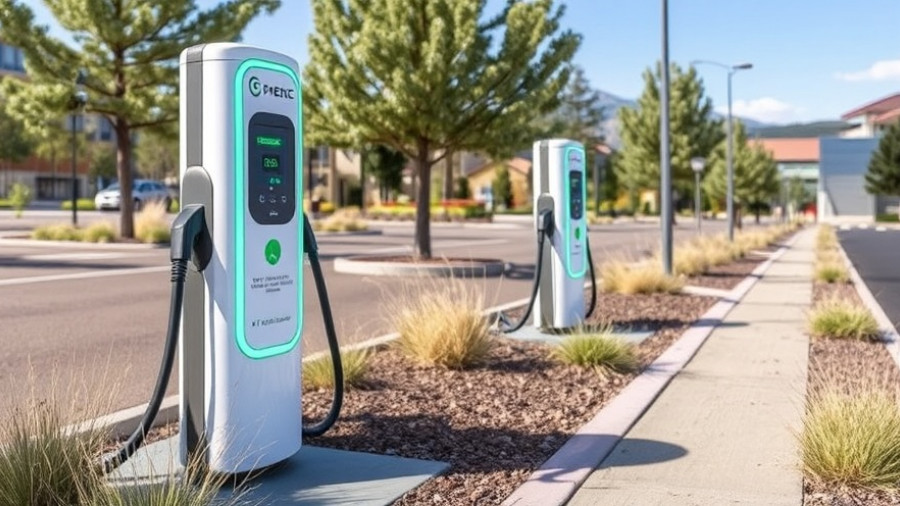
Colorado Leads the Charge in EV Infrastructure with New Fast-Charging Ports
Amid the push for sustainable transportation, Colorado is taking significant strides toward enhancing its electric vehicle (EV) infrastructure. Recently, the state secured the final $12 million from a total of $56.5 million federal funding designated for expanding its EV charging network. This funding, allocated through the National Electric Vehicle Infrastructure (NEVI) grant program, will facilitate the installation of approximately 100 new fast public EV charging ports at strategic locations.
Building a Robust Charging Network
Under the vision of Governor Jared Polis, Colorado is not only aiming to be a leader in electric vehicle adoption but is also rapidly improving the convenience of charging infrastructure. Currently, the state boasts over 5,000 Level 2 charging ports and more than 1,400 fast-charging ports, allowing around 80% of its highway system to be within 30 miles of a fast charger. As discussed in Colorado Politics, this expansion is expected to assist in maintaining Colorado's status as the number one state for EV adoption, with EVs now representing one in four new light-duty vehicle sales.
The Role of EV Charging in Tourism
Tourism is a significant driver of Colorado's economy, and enhancing EV charging infrastructure aims to cater to the influx of visitors exploring the state’s scenic landscapes. With charging stations now available at 19 of Colorado’s 26 scenic byways and various outdoor recreational areas like ski resorts and national parks, the infrastructure is designed to seamlessly integrate into the tourist experience. This commitment to facilitating EV charging for tourists underscores the connection between sustainable practices and economic vitality.
Future Predictions for Electric Vehicles in Colorado
Looking ahead, the establishment of additional charging stations is set to support the state's ambitious climate goals, which prioritize clean transportation solutions. With Colorado's EV registrations exceeding 200,000, the demand for charging options is palpable. As highlighted in statements from the Colorado Energy Office, the state’s strategy focuses on making electric vehicles accessible and affordable while ensuring all areas have the necessary infrastructure for long-distance travel. There's a clear trajectory indicating that as the number of registered EVs continues to climb, so too will the demand for reliable charging alternatives.
Counterarguments and Diverse Perspectives on EV Infrastructure
While the movement towards expanding EV infrastructure is largely viewed positively, it does not come without criticism. Some skeptics argue that the reliance on battery-powered vehicles poses its own set of challenges, particularly concerning the sourcing of materials for batteries and the environmental impacts of their disposal. Critics often raise concerns about the pace of transitioning away from fossil fuels, urging for a more balanced approach to energy solutions. However, proponents argue that enhancing EV infrastructure not only reduces dependency on fossil fuels but also contributes to better air quality and energy independence over time.
Unique Benefits of Expanding EV Infrastructure
For Coloradans and tourists alike, the expansion of EV charging stations presents numerous benefits. Beyond accessibility, electric vehicles contribute to heightened air quality and a reduction in urban noise levels. The move towards a greener transportation framework is also poised to yield long-term financial savings for users. With EVs costing less to operate compared to traditional vehicles, the financial incentives are compelling enough to encourage the switch to electric.
Actionable Insights: What This Means for You
If you’re considering purchasing an electric vehicle or are already a proud EV owner, staying informed about the evolving network of charging stations is crucial. By knowing where the newest installations will be and planning your routes accordingly, you can enjoy peace of mind while traveling through Colorado. As Colorado continues to build its fast-charging infrastructure, it becomes increasingly practical and convenient for EV owners to consider making longer trips or even exploring more remote locales without the fear of running out of battery.
In conclusion, Colorado’s commitment to expanding its EV charging network will not only benefit the local populace but will also enhance the tourism experience, drive economic growth, and contribute to a healthier environment. Stay updated on the latest developments in EV infrastructure to take full advantage of these advancements while supporting a greener future.
 Add Row
Add Row  Add
Add 




Write A Comment